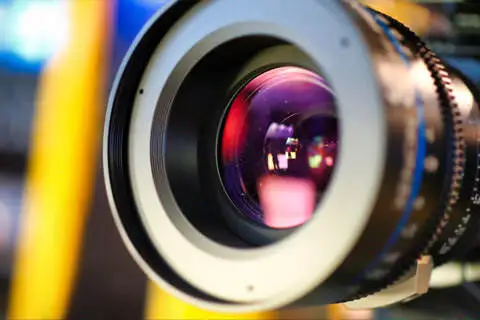Cinematography and Images

Magnetic materials are an important part of film which include motion-pictures and photographs. Appropriate storage, handling and care are important for the magnetic material to be used properly and last. These standards go into specifics for this category in order for the integrity of film and other materials to be maintained.
ISO 18923:2000
Imaging materials -- Polyester-base magnetic tape -- Storage practices
This International Standard provides recommendations concerning the storage conditions, storage facilities, enclosures, and inspection for recorded polyester-base magnetic tapes in roll form. It covers analog and digital tape and includes tape made for audio, video, instrumentation and computer use.
This International Standard is applicable to medium-term and extended-term storage of magnetic tape as defined in 3.18 and 3.7 and also is applicable to magnetic-tape records intended as master tapes, which should not be in frequent use.
Deviations from these recommendations, whether before or after recording, may result in shortened life expectancy. For example, adverse conditions during shipment, handling, or usage.
This International Standard is not applicable to “work” or “use” copies (see informative annex C).
ISO 18923:2000
Imaging materials -- Polyester-base magnetic tape -- Storage practices
This International Standard provides recommendations concerning the storage conditions, storage facilities, enclosures, and inspection for recorded polyester-base magnetic tapes in roll form. It covers analog and digital tape and includes tape made for audio, video, instrumentation and computer use.
This International Standard is applicable to medium-term and extended-term storage of magnetic tape as defined in 3.18 and 3.7 and also is applicable to magnetic-tape records intended as master tapes, which should not be in frequent use.
Deviations from these recommendations, whether before or after recording, may result in shortened life expectancy. For example, adverse conditions during shipment, handling, or usage.
This International Standard is not applicable to “work” or “use” copies (see informative annex C).
ISO 5758:2002
Cinematography - Labelling of containers for motion-picture film and magnetic material - Minimum information for exchange of materials
ISO 5758:2002 specifies the information to be included on the label and/or accompanying documents, for identifying the contents of containers for processed motion-picture film and magnetic sound records. It specifies the minimum information necessary for the exchange of materials.
NOTE It does not apply to the labelling of containers of unexposed motion-picture films and magnetic materials specified in ISO 3042.
ISO 5758:2002
Cinematography - Labelling of containers for motion-picture film and magnetic material - Minimum information for exchange of materials
ISO 5758:2002 specifies the information to be included on the label and/or accompanying documents, for identifying the contents of containers for processed motion-picture film and magnetic sound records. It specifies the minimum information necessary for the exchange of materials.
NOTE It does not apply to the labelling of containers of unexposed motion-picture films and magnetic materials specified in ISO 3042.
IEC 60740-2 Ed. 1.0 b:1993
Laminations for transformers and inductors for use in telecommunication and electronic equipment - Part 2: Specification for the minimum permeabilities of laminations made of soft magnetic metallic materials
Specifies requirements for the minimum permeabilities of laminations made of silicon-iron and nickel-iron alloys as defined by the alloy classes C2, E1, E3 and E4 of IEC 60404-1.
IEC 60740-2 Ed. 1.0 b:1993
Laminations for transformers and inductors for use in telecommunication and electronic equipment - Part 2: Specification for the minimum permeabilities of laminations made of soft magnetic metallic materials
Specifies requirements for the minimum permeabilities of laminations made of silicon-iron and nickel-iron alloys as defined by the alloy classes C2, E1, E3 and E4 of IEC 60404-1.
